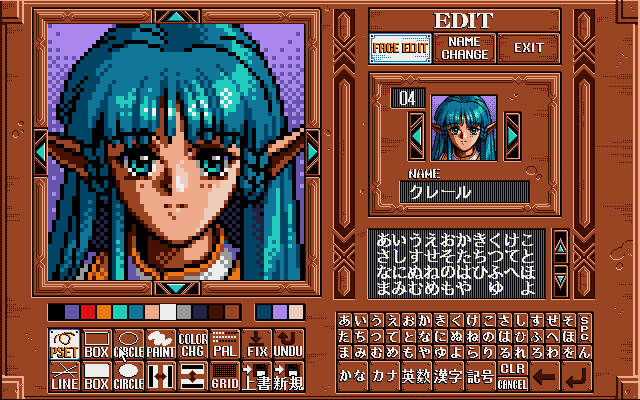
Pc98 Game Download
Download 100% Free Games. Download pc98 games download Wisconsin for pc Dec 31, 2014 DOWNLOAD. Download Games from this Safe and Trusted site. Download Games from this Safe and Trusted site.
PC-9801RX with the Type Release date October 1982; 36 years ago ( 1982-10) (PC-9801) November 1992; 26 years ago ( 1992-11) (PC-9821) Introductory price ¥298,000 Discontinued 2003,,, @ 5 MHz and higher Memory 128 and higher Predecessor The PC-9800 series (: PC-9800シリーズ,: Pī Sī Kyūsen Happyaku Shirīzu), commonly shortened to PC-98, is a lineup of and personal computers manufactured by from 1982 through 2000. The platform established NEC's dominance in the Japanese market, and by 1999, more than 18 million PC-98 units had been sold.
PC-9801F motherboard The first model, the PC-9801, was launched in October 1982, and employed an. It ran at a of 5 MHz, with two display controllers (one for text, the other for video graphics), and shipped with 128 KB of, expandable to 640 KB. Its 8-color display had a maximum resolution of 640×400 pixels. Its successor, the PC-9801E, which appeared in 1983, employed an -2 CPU, which could selectively run at a speed of either 5 or 8 MHz.
Torrent sound packs for logic pro. The NEC PC-9801VM used CPU. When the PC-9801 was launched in 1982, it was initially priced at 298,000 yen (about US$1,200 in 1982 dollars). While NEC did not market these specific machines in the West, it did sell the NEC, which has similar hardware as early PC-98 models.
In the 1980s and early 1990s, NEC dominated the Japan domestic PC market with more than 60% of the PCs sold as PC-9801. In 1990, Japan introduced the which enabled displaying Japanese text on standard adapters. After that, the decline of the PC-98 began. The PC-9801's last successor was the -based PC-9821Ra43 (with a clock frequency of 433 MHz, using a 440FX chipset-based motherboard design from 1998), which appeared in 2000. NEC kept much of its hardware and platform proprietary or under license, so while it had a virtual monopoly in the Japanese market, later IBM PC clones with DOS/V and Windows from companies such as and that did not require such license fees (like Epson's 98 clones) flooded the market and displaced NEC.
[ ] Hardware [ ] The PC-98 is different from the IBM PC in many ways; for instance, it uses its own 16-bit C-Bus () instead of the bus;, addressing, memory management, and graphics output are also different. However, localized or will still run on PC-9801s.
Expansion bus [ ]. 4 MB memory board for C-Bus Many PC-9801 models could increase system memory by expansion boards, daughterboards, or proprietary. They were limited to 14.6 MB, due to 24-bit address pins and reserve space.
Memory boards for C-Bus were also available. The PC-9821Af introduced in 1993 shipped with standard 72-pin SIMMs, broke 14.6 MB barrier and supported memory up to 79.6 MB. Later desktop models shipped with standard SIMM or memory. Storage [ ] Early PC-9801 models supported 1232 KB 8-inch and/or 640 KB 5¼-inch floppy drives. Each used different lines and I/O ports.

Later models supported both interfaces. 5¼-inch and 3½-inch HD floppy disks used the same logical format and data rate with 1232 KB 8-inch floppy disks. They became a non-standard format while formats brought by IBM and became industrial standard.
The PC-98 supports up to four floppy drives. If the system is booted from a floppy drive, MS-DOS to all of the floppy drives before considering hard drives; if booted from a hard drive, it will do the opposite. If the OS was installed on the hard drive, MS-DOS would assign the hard drive as drive 'A:' and the floppy as drive 'B:'; this would cause incompatibility among Windows PC applications, although it can be resolved with the SETUP command in Windows 95, turning on the '/AT' switch to assign the Windows system drive to the standard 'C:' drive. The PC-98 used several different interfaces of hard drives.